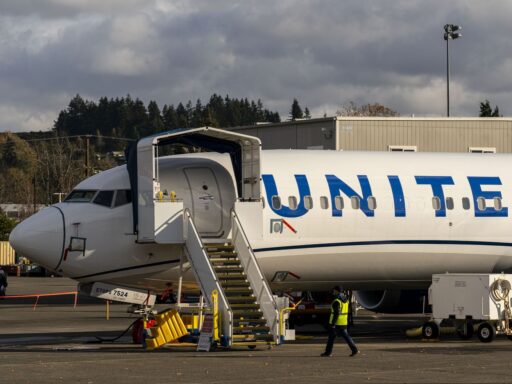The jets had been grounded since March 2019 after two deadly crashes.
The Boeing 737 Max can take to the skies again.
The aircraft that gained worldwide notoriety after crashing twice in five months in late 2018 and early 2019, was finally cleared to fly again after the Federal Aviation Administration decided Boeing’s technical changes and new protocols mitigated the safety concerns.
“Today we took the final steps to enable the Boeing 737 Max to safely return to commercial service,” FAA Administrator Stephen Dickson announced in a video. “And this morning, I signed an order rescinding the grounding order that the FAA issued on March 13, 2019.”
Boeing had already been projecting billions of dollars in financial losses due to the crisis, and that was before the Covid-19 pandemic drastically reduced the aerospace company’s revenue.
Flights on the Boeing 737 Max were grounded in March 2019 after two deadly crashes. The first came in October 2018, when a Lion Air flight taking off from Jakarta, Indonesia crashed and killed all 189 passengers. Five months later, on March 10, 2019, an Ethiopian Airlines plane en route from Addis Ababa, Ethiopia, to Nairobi, Kenya, crashed shortly after takeoff, killing all 157 people on board.
China, the European Union, and the United States quickly grounded all Boeing 737 Max 8 and 9 planes. Malaysia, Singapore, and Australia did likewise, and before long, the planes were grounded all over the world.
“Pilots have been notified, airlines have all been notified. Airlines are agreeing with this. The safety of the American people and all people is our paramount concern,” President Donald Trump said in March 2019 announcing the FAA’s order.
As Matthew Yglesias explained for Vox last year, Boeing executives blamed the crashes on a simple software problem that could be fixed by a new software upgrade. But the real issue is much bigger than that. A decade ago in the Great Recession, Boeing was also in financial trouble, and thought it could lose a large swath of the commercial aircraft market to its major competitor Airbus. The FAA, meanwhile, was eager to help them rush the new model to the market to compete with Airbus’s new planes, rather than look into potential problems with their aircrafts:
A major employer faced a major financial threat, and short-term politics and greed won out over the integrity of the regulatory system. It’s a scandal.
There were software problems, training problems, and “a whole host of other problems” related to the design. Still, airlines were eager to purchase the planes and start flying them, so Boeing went ahead and sent them along. And the FAA, as Seattle Times aerospace reporter Dominic Gates told Yglesias, “has over the years delegated increasing authority to Boeing to take on more of the work of certifying the safety of its own airplanes.”
Since the 737 Max planes were grounded, Boeing has changed the design of the jets, updated its training programs for flight crew members, and upgraded the MCAS software that was blamed for the crashes. Still, family members of the victims of the Ethiopian Airlines crash held a press conference ahead of the FAA’s announcement casting doubt on whether Boeing had taken enough steps to mitigate the safety concerns.
The FAA’s decision will likely be followed by similar rulings from regulators around the world. But even in the US, it may take several months before passengers are flying on Max jets again — the FAA still has not approved pilot training procedures for each US airline that operates the Max jets. American Airlines expects to be flying them before the end of 2020, United Airlines estimates the first quarter of 2021, and Southwest Airlines is aiming for the second quarter of next year.
Author: Benjamin Rosenberg
Read More



